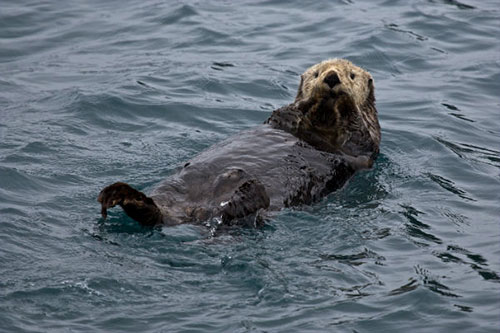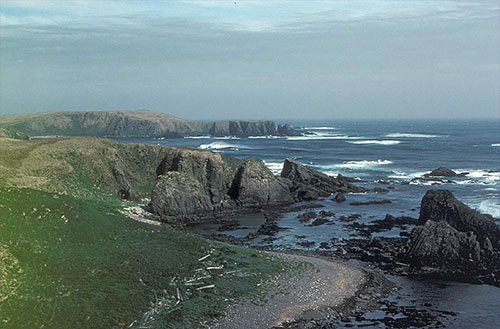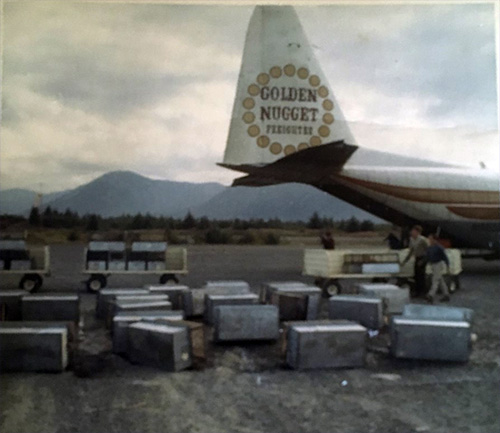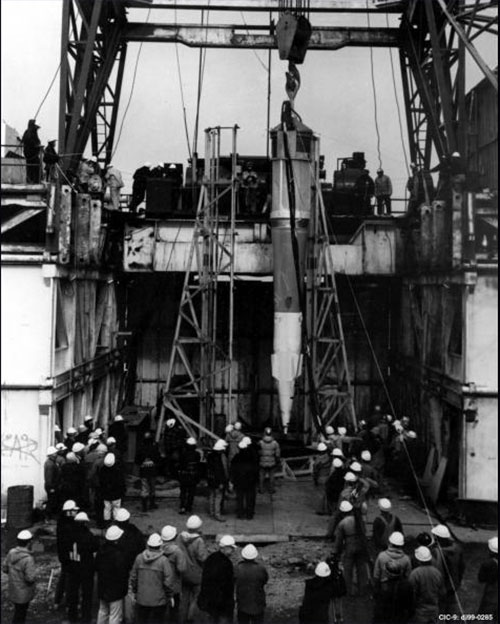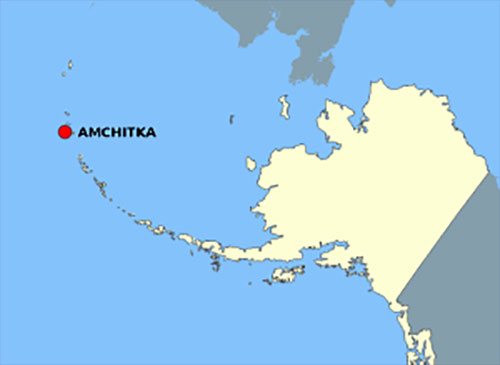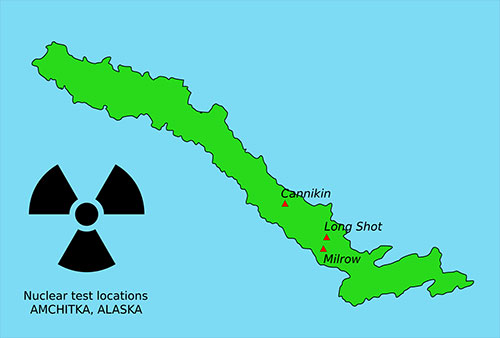Planes aren't the only kind of 'otters' that have flown in SoutheastLocal pilots helped transplant Aleutian otters in late 1960s.By DAVE KIFFER April 13, 2020
Herman Ludwigsen - who flew for more than half as century in Southeast and Southeast Alaska - certainly feels the otters were his most unusual passengers.
Before the Russians arrived in force in Alaska in the late 1700s, it was estimated there were more than 100,000 sea otters in the waters off Alaska. But the sea otter pelts were worth a fortune in the Far East and they were hunted to near extinction in little more than a century. By 1900, there were sea otters left in a handful of locations in Russia, Alaska and California. An international treaty introduced a harvest moratorium in 1911, but even that didn't stem the Alaskan decline. By the 1950s, there were no sea otters left in Southeast Alaska. In the mid 1960s, the newly created Alaska Department of Fish and Game began making preparations to transplant some of the remaining Aleutian sea otters to Southeast. The original hope was that they could restore the SE population and then allow residents to have a small yearly harvest to sell some of the furs.
There was also another reason to move some of the sea otters from the Aleutians. The federal government had settled on Amchitka Island - half way between Dutch Harbor and Adak - as the site for underground nuclear tests. Its remote location figured into testing but also meant that it was one of the few places in the region that had a healthy sea otter population. Marine scientists were quietly concerned that the testing could devastate the otter populations, even though the government was officially announcing that the underground tests would have little or no effect on the marine mammal population. As a result, more than 400 otters were captured at Amchitka, loaded on C-130 transport planes and flown to Southeast, where they were loaded into Grumman Goose amphibian planes and transported to several release sites between 1965 and 1968. Initially otters were released near Yakutat and Sitka, but in 1968, more than 100 were brought to Southern Southeast.
The release sights in 1968 were near Craig, in the appropriately named Sea Otter Sound, where 51 were released and on the Barrier Islands, near the Southwest edge of Prince of Wales Island, near Cape Chacon where 55 were released. Another 50 were released on Cross Sound in northern Southeast. The Southeast releases were coordinated by Ketchikan based ADFG game biologist Jerry Deppa. A state report on the program quoted Deppa as saying the otters were captured with gillnets in the Amchitka kelp beds and then held in large holding tanks on Amchitka. "For transport, individual bathtub like kennels were fashioned from galvanized steel approximately 18 inches wide by 36 inches long and 8 inches deep with hinged, perforated, angle iron tops covered by netting," Deppa reported. "The kennels were designed to be stackable and to fit though the rear door of a Grumman Goose amphibious aircraft. They could also hold several inches of water to keep the otter more comfortable." After the long C-130 flight from Amchitka to the Annette Island airport, the otters were loaded - 10 at a time - into the Grummans which had removed their seats.
"Once the planes landed on the water, the otters were set free one-at-a-time through the plane door by opening the hinged kennel top and letting the animals slide out," Deppa added. The three Grummans waiting at Annette represented two different airlines. In addition to Ludwigsen flying for Webber Air, Bud Bodding and Ray Renshaw were flying Alaska Airlines Goose. Both Bodding and Renshaw had joined Alaska when it absorbed Alaska Coastal Ellis the year before. The first batch of otters was taken to the Barrier Islands and then the second batch to Khaz Bay near Sitka. Finally, the three Goose dropped off 30 more otters in Cross Sound, not far from Glacier Bay. But once the releasing of sea otters was done in Southeast, Ludwigsen wasn't through with the furry mammals. In October of 1969, nine more otters were to be taken to Victoria. The otters had been brought to Ketchikan on a boat which then had engine trouble. They need to be flown on to Victoria but - as usual - the weather was bad. The other pilots begged off, leaving Ludwigsen the only one willing to make the trip from Annette to Victoria.
"It was not a nice trip (weatherwise)," Ludwigsen said recently, noting that it was a 4-5 hour trip by Goose. "The otters knew how to talk. Very loud screeching and whistles the whole way down." He said it was one of the rare times when the noise of the engines and the radio traffic was good, in that it drowned out the sounds of the sea otters. After the otters were delivered, he said, it also required a lot of cleanup. "It was pretty smelly in there (the back of the Goose)," Ludwigsen added. "There was also a lot of salt water - from the cages (in the back of the plane." Ludwigsen said the he was supposed to stay in a fairly "swanky" hotel before flying back to Ketchikan, but that hotel employees balked at letting him in when arrived smelling of otters. Eventually they relented.
It turned out that the scientists were correct about the danger the bomb tests caused the Amchitka sea otters, with later - originally classified - estimates that more than 1,000 otters died in the waters near the island during and after the tests, many killed by underwater landslides caused by the blasts. Meanwhile, the otters transplanted to Southeast Alaska thrived. Current estimates are there are more than 25,000 sea otters in Southeast, nearly all along the outer islands bordering the Pacific Ocean. With few natural predators and no large scale hunting, they are increasing at 12-14 percent a year. That increase has sparked concerns that regional shellfish numbers are dropping, threatening the lucrative shellfish fisheries in the region. Currently, only Alaska Natives are allowed to hunt the sea otters, but several groups have called for a regular state hunt to limit the growth of sea otter in an area in which they had been wiped out and then flown back into a half century ago.
On the Web:
Contact Dave at dave@sitnews.us Dave Kiffer ©2020 Publication fee required. © Representations of fact and opinions in comments posted are solely those of the individual posters and do not represent the opinions of Sitnews.
|
||||||||

